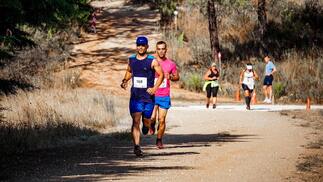 Photo by RUN 4 FFWPU from Pexels Photo by RUN 4 FFWPU from Pexels Last Thursday, I hosted a Run For Your Life session which combined walking, jogging and running - a type of session called fartlek (Swedish for "speedplay"). I was asked by one of the participants whether this is what they should be doing during a race. Great question! Let's say you're at Parkrun and you know can't run continuously for 5 km, then it's absolutely fine to intersperse your running with the occasional walk to catch your breath. This is a great way to make longer distances achievable, particularly if you are new to running, or to that distance. However, if you know you can run the distance and want to maximise the speed overall, then you will find it best to run either at a steady pace, or run slightly faster in the second half of the race than the first. In practice, most people tend to run a bit too fast at the start, and steadily slow down during a race. This means early exhaustion, and spending most of the race tired! If you can learn to pace yourself early on in the run (which is much harder than it sounds), you will have the energy left to speed up in the second half. So why do we often vary speed in training? Going for long, steady runs according to the distance you are training for is great, and is something that any long distance runner would want to have as the mainstay of their training programme, but there are several benefits to adding speed intervals:
Runners World: www.runnersworld.com/uk/training/motivation/a775858/4-interval-running-sessions-for-any-race-goal/ Runners Blueprint: http://www.runnersblueprint.com/interval-running-workouts-for-speed/ |
AuthorFitness and Pilates instructor with a passion for science. Archives
November 2021
Categories |
 RSS Feed
RSS Feed
